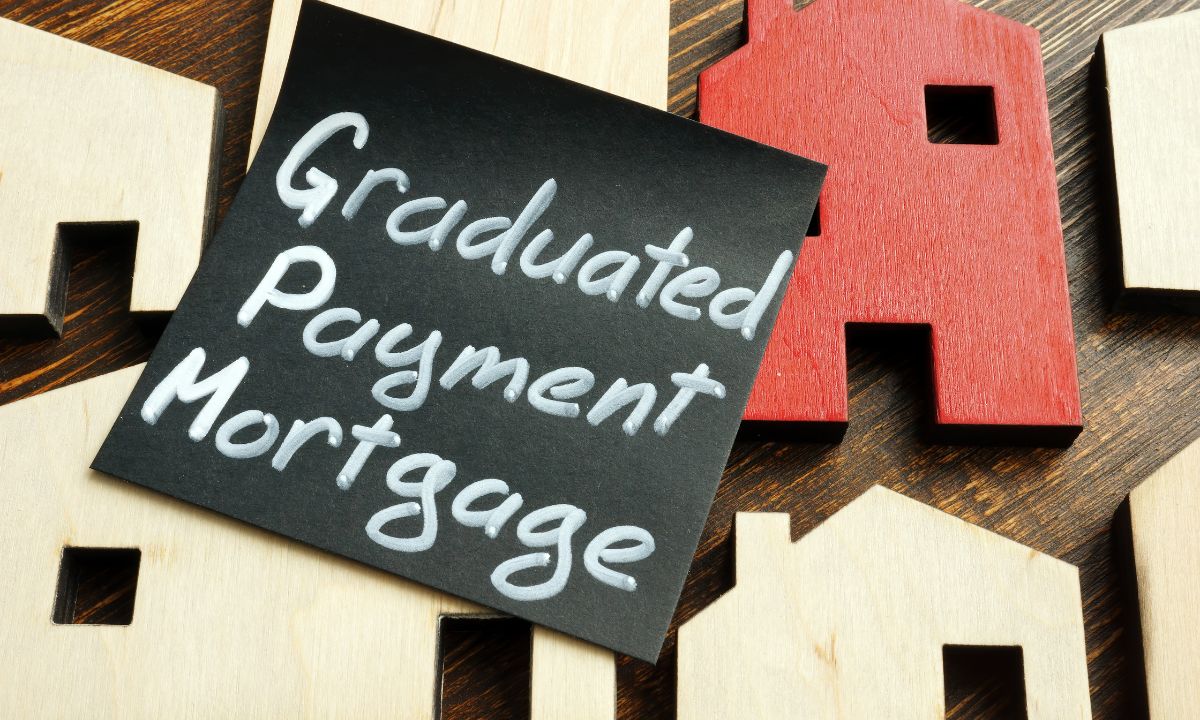Understanding Graduated Payment Mortgages
 When it comes to buying a home, you will find many mortgage options available. One of the lesser-known but potentially advantageous choices is the Graduated Payment Mortgage (GPM). Let’s discuss what GPMs are, how they work, and how they differ from other mortgage options.
When it comes to buying a home, you will find many mortgage options available. One of the lesser-known but potentially advantageous choices is the Graduated Payment Mortgage (GPM). Let’s discuss what GPMs are, how they work, and how they differ from other mortgage options.
What is a Graduated Payment Mortgage?
A Graduated Payment Mortgage is a type of home loan where the payments start low and gradually increase over time. This structure can be particularly appealing to those who expect their income to rise steadily in the future. The idea is to match your mortgage payments with your anticipated financial growth, easing the initial burden when you might have less income.
How Does a Graduated Payment Mortgage Work?
- Initial Low Payments: In the beginning, your monthly mortgage payments are relatively low. This can make homeownership more accessible if you’re just starting out in your career or have limited income initially.
- Scheduled Increases: Over a predetermined period (usually 5 to 10 years), your payments increase annually. These increases are predefined and detailed in your mortgage agreement.
- Leveling Off: After the initial period of increasing payments, your payments will level off and remain constant for the remainder of the loan term.
- Interest Accrual: During the initial years, when payments are lower, they may not cover the full interest on the loan. The unpaid interest is added to the principal balance, a process known as negative amortization. This means your loan balance might actually increase in the early years.
Key Differences from Other Mortgage Types
- Fixed-Rate Mortgages (FRM):
- Stability vs. Flexibility: Fixed-rate mortgages offer stable payments throughout the life of the loan. In contrast, GPMs provide lower initial payments with scheduled increases, offering more flexibility early on but less predictability in the long term.
- Interest Rates: Fixed-rate mortgages have a constant interest rate, whereas GPMs can have varying effective interest rates due to negative amortization in the early years.
- Adjustable-Rate Mortgages (ARM):
- Interest Rate Changes: ARMs have interest rates that change periodically based on market conditions, while GPMs have fixed scheduled payment increases.
- Payment Stability: GPMs have predetermined payment increases, providing more predictability compared to ARMs, which can fluctuate significantly.
- Interest-Only Mortgages:
- Payment Structure: Interest-only mortgages allow you to pay only the interest for a certain period, after which you must start paying principal and interest. GPMs, on the other hand, start with low payments that gradually increase, always including principal and interest components.
- Principal Reduction: With a GPM, you start reducing your principal balance earlier compared to an Interest-only mortgage, where principal reduction starts after the interest-only period.
Is a Graduated Payment Mortgage Right for You?
A GPM can be a good fit if:
- You expect a significant increase in your income over the next few years.
- You need lower initial payments to manage your budget early on.
- You are comfortable with the prospect of rising payments in the future.
However, it’s crucial to carefully consider your financial stability and future earning potential. The scheduled increases in payments are fixed, and if your income doesn’t grow as expected, you might find yourself struggling to keep up.
Graduated Payment Mortgages offer a unique approach to home financing, providing lower initial payments that grow over time. Understanding the complexities of various mortgage types is essential for making the best financial decision for your future. If you have any questions or need personalized advice, feel free to reach out to us.